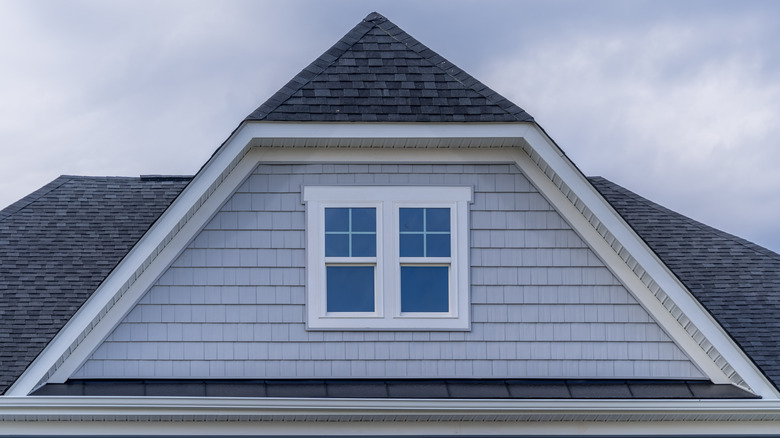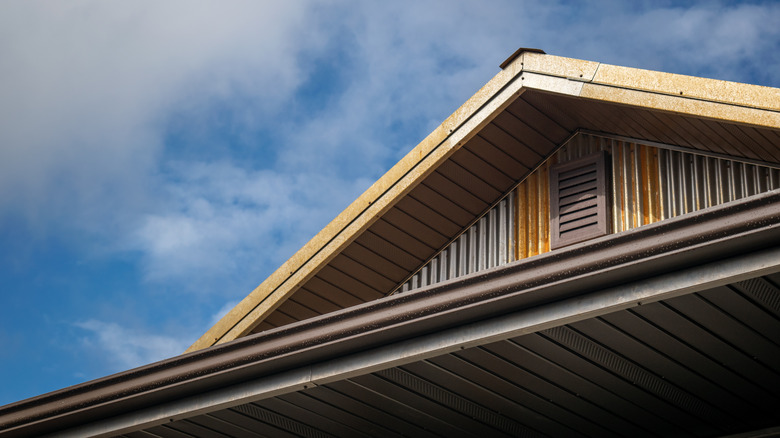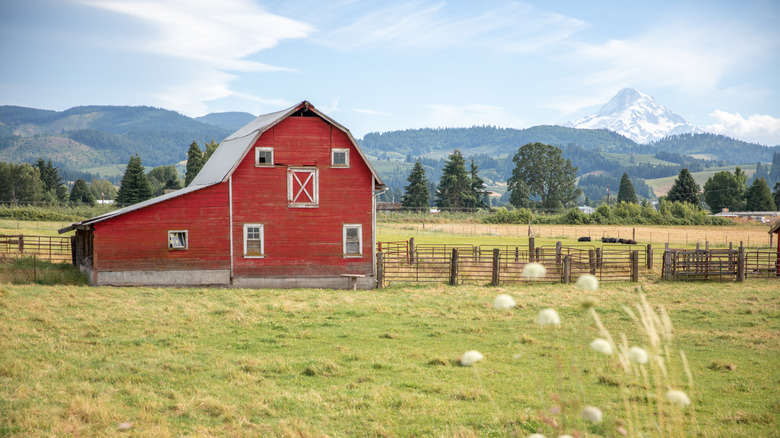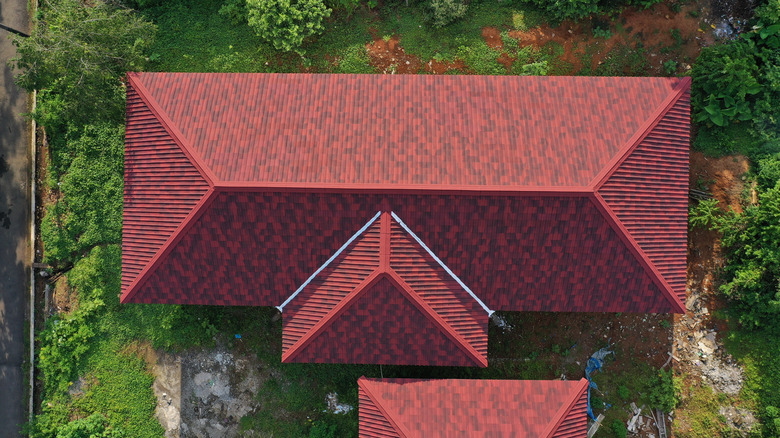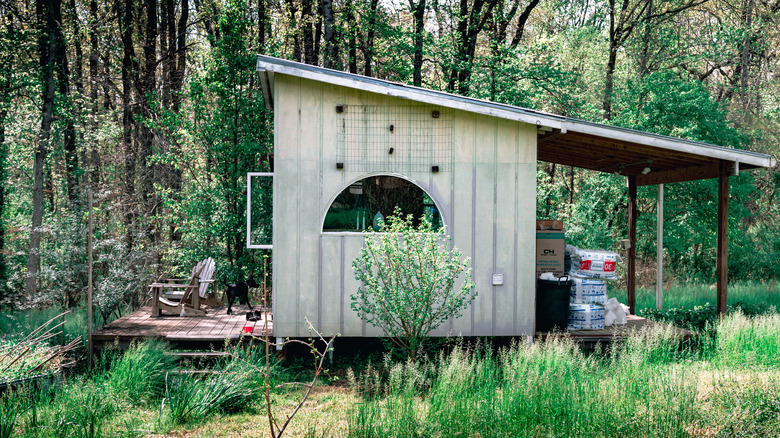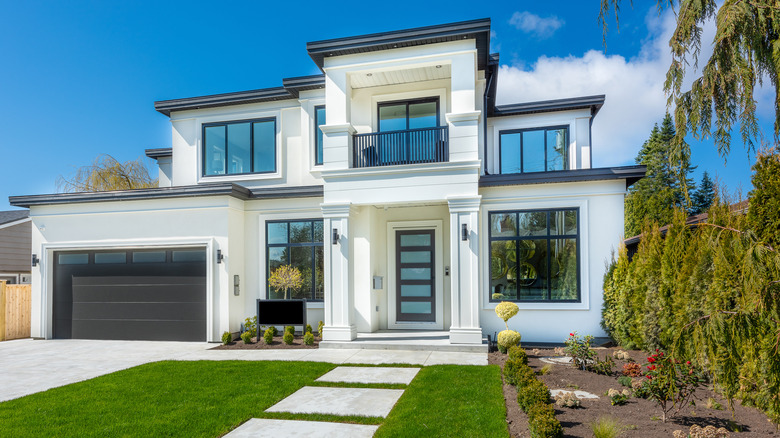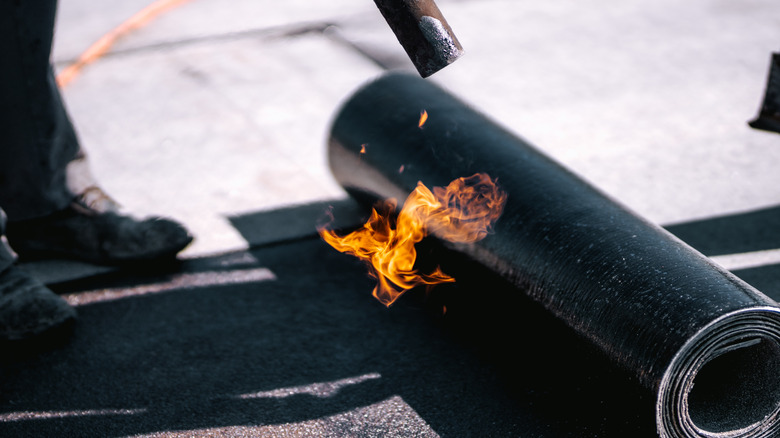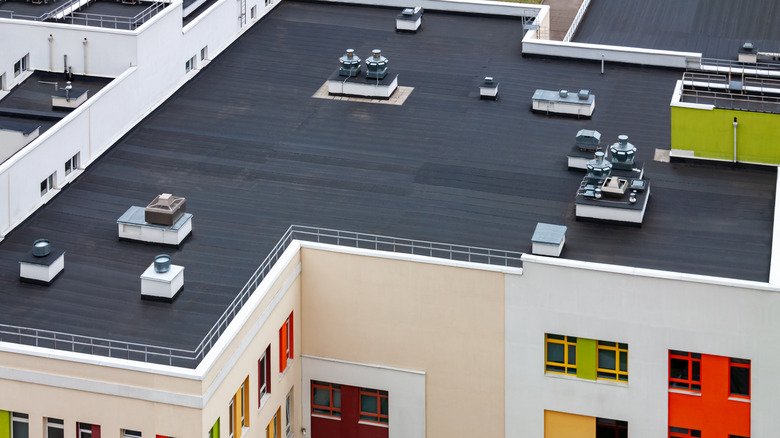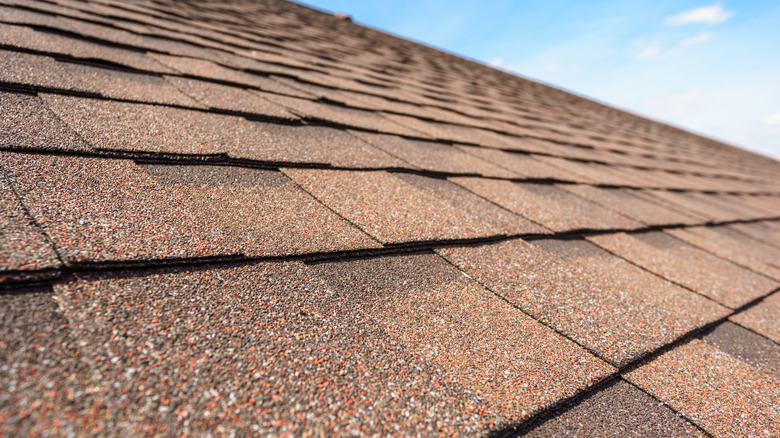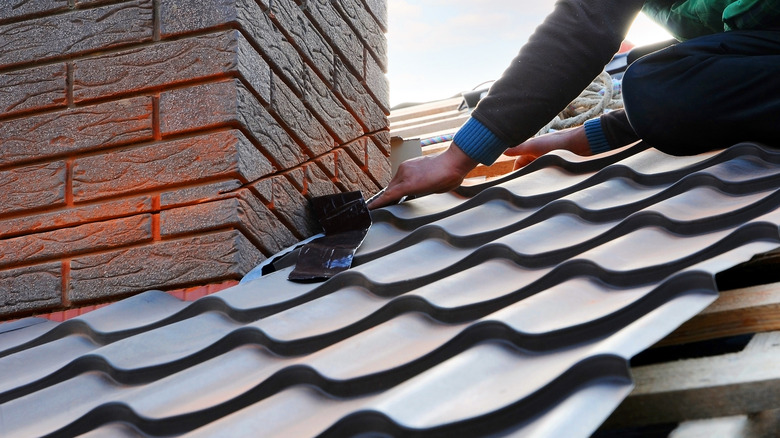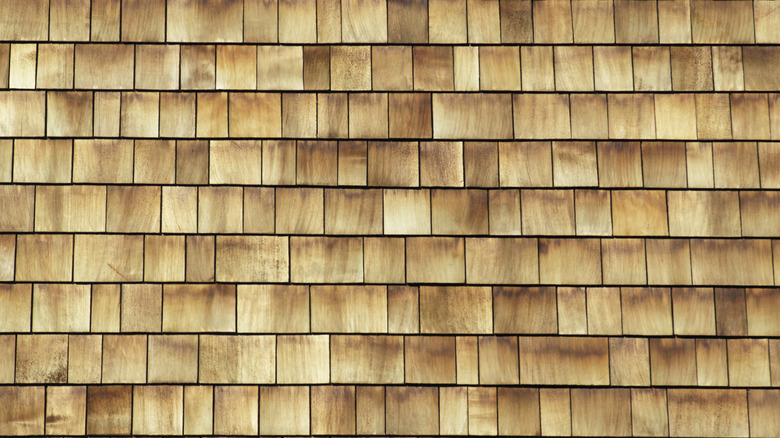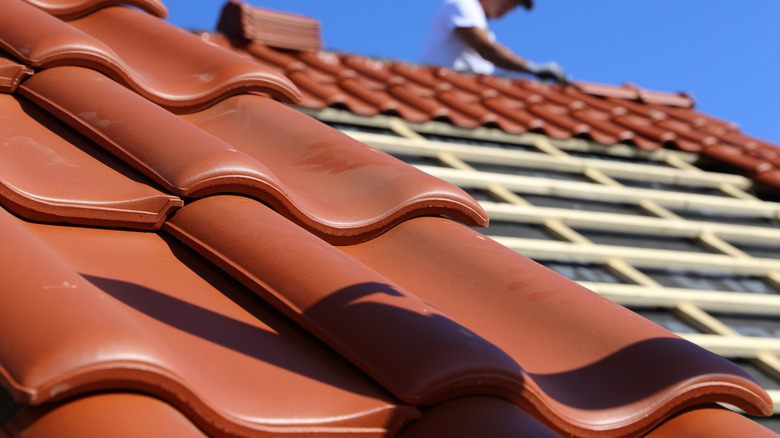Different Types Of Roofs To Consider
If you thought you could get a new roof without having many choices, think again. There are many different types of roofs to consider, including style and materials. Are you building a new house or replacing an old roof? What type of climate do you live in? What's the style of your home? These are a few things to consider, along with cost and which material to use when getting a new roof. To get started, consult with a professional roofer or contractor who knows what works best in your area.
Next, create a budget. Once you get an idea of what type of roof you need, a budget will help you determine what you can afford now, or if it's best or even possible to wait a little longer until you can get the right roof for your home. According to Bob Vila, it's not just the materials that are considered when pricing a new roof. The shape of the roof, and what kind of condition the supporting structure is in, affect the price as well. No matter what, don't rush into an important decision like replacing your roof. When done correctly, a new roof should last at least 25 years.
Gabled roof
When you were a child, you probably drew a lot of gabled roof designs when you drew pictures of houses. It's a common look with two sides sloping toward the walls of the house. According to Pro-Tech Roofing, there are several advantages to gabled roofs, including simple design and ease of building, cost-effectiveness, decent attic space, along with an ability to combine with other roof designs. Perhaps, the number one reason we love gabled roofs is that they easily get rid of rainfall and snow. Thanks to the angle at which they lay, moisture has little chance of staying put when it hits the slop of a gabled roof.
One downside to gabled roofs is that they are prone to damage in severe weather, such as high winds. Still, they are the most used, even in areas that see plenty of storms. Homeowners enjoy the traditional style and for the most part, a gabled roof will last up to 25 years when taken care of. As with any roof, if repairs are made, when necessary, it should last the average amount of time.
Clipped gable roof
A home with a clipped gable roof gets noticed because it's unique. This type of roof instantly gives even a modern home a connection to the past. According to Houzz, a clipped gable roof is like a gable roof except the top is clipped off rather than rising to a point. Where you'd usually see a point, the roof is flat. You'll commonly see this type of roof in a craftsman or bungalow home. Part of the charm of a clipped gable roof is it reminds people of a cottage or of times long ago. This makes sense, since these roofs have been used since the 15thcentury in places like Central Europe and Denmark.
Just like its cousin, the gable roof, a clipped gable handles all kinds of weather, including heavy snow. Moisture rolls right off. If choosing a clipped gable roof, make sure it suits the style of your home. They're traditional but a bit unique and you'll want to make sure everything flows well together. If a bungalow, craftsman, or cottage is your dream, then the clipped gable roof is your answer
Dutch gabled
If you live in a colder climate, a Dutch gable roof, sometimes called a gablet, is an excellent choice. They help reduce heating bills and allow in more sunlight than other roofs. This is because they don't slope down as far, which leaves the windows more exposed. Many people choose to add an additional window as well to the gablet of the roof. According to RBG Construction, this creates even more ventilation and light. The Dutch gabled roof also allows for more storage space in a home because the attic is easily accessible and has more space to work with.
If the roof style immediately reminds you of snow and smoking chimneys in the woods, it's because the Dutch gabled roof is a common one you'll see on log cabins. That doesn't mean you can't have this type of roof on any style of home you desire. Although the Dutch gable works well in cold climates, it's essential that during construction, the joints are properly sealed where the slope meets the flatter part of the roof, to avoid leaks during rain and snow.
Gambrel roof
To best envision a gambrel roof, imagine a country barn. Gambrel roofs are considered colonial-style roofs, and you'll most often see them on barns or out east on a colonial-style home. According to Home Stratosphere, a gambrel roof has four sides instead of two, although it's basically a gable roof design. All sides are sloped, but the slope on the top is steeper than the slope of the bottom two sides. Sometimes the gambrel roof is used in combination with other roof styles, especially in larger homes.
You may see a small gambler roof in the front of a home for decorative purposes, while the other roofs on the home are simple gables. The gambrel roof can be angled at the front of a home so it creates a natural roof for a front porch, which is also a common style you'll see on log cabins. A great benefit of these roofs is, because of the design, they're perfect when adding an additional floor to your home.
Hip roof
A hip roof is designed with all four sides of the roof slanting down toward the walls. They're excellent in areas that see a lot of snow. It can be confusing trying to understand the difference between a gabled roof and a hip roof because they both look very traditional. According to Long Home Products, the easiest way to see the difference is to count the sides. A hip roof has four sides sloping down toward the walls while a gable has only two. Some roof experts feel the hip roof is one of the most stable roofs you can choose. They're sturdy and durable because of their self-bracing design. Wind, snow, and rain are no match for four sloped sides on the hip roof. It sort of just bounces off and protects the home.
Another thing homeowners enjoy about the hip roof is the aesthetic appeal due to the consistent look. Unlike many other roof styles, the hip roof creates a design that has all of the eaves around the house lining up at the same height and angle. It's a clean appearance that many people enjoy.
Mansard roof
For a more formal and elegant roof, the mansard-style roof fits the bill. Its roots trace back to the French Second Empire style and the design is also called a French roof. According to Wentworth Studio, this elaborate roof is lovingly referred to as a "wedding cake" design, and during the time of Napoleon III, the style boomed and was seen mainly on large, well-to-do residences only. Today, we still mainly see the mansard-style roof on larger homes, simply because it's a bit intricate and detailed.
The characteristics of the mansard roof are four sides (gambrel-style hip roof) with two slopes on each side. The mansard roof always has dormer windows on the lower slope and that slope is steeper than the others. One can't help but think of a dollhouse when viewing a mansard roof. They signify elegance and beauty and give us a glimpse into the true art of architecture and roof design.
Shed roof
A shed roof only has one slant, and it offers plenty of advantages. For a modern home with straight, minimal lines, a shed roof is perfect. According to Roper Roofing and Solar, many homeowners look to the shed roof because it's cost-effective and has a simple design. Shed roofs are no longer for sheds only. Today, homeowners are creative and environmentally-conscious.
A shed roof is a perfect design for solar panels, which cut down on energy costs. You can even use this simple style to implement a green roof and grow organic vegetation no matter how large or small your lot is. Shed roofs are excellent for drainage because of their slope, making them useful in all weather conditions. They're easily repaired as you deal with only one side, and can be built with any roofing material. They may not be the right look for just any house, but for a contemporary, modern design, the shed roof is worth considering.
Flat roof
To maximize interior space, consider a flat roof. They're more often seen on commercial buildings, and of course, don't work well for every type of home. Still, when they are an option, the flat roof offers a unique style. You'll see more flat roofs in areas like California that don't see as much rainfall and snow as other areas of the country. Imagine three feet of snow sitting on your roof? No one wants to climb up and shovel that. So, if you're in a dryer climate, your roof choices are endless.
According to Lifetime Roofing, these roofs have some great advantages, including low cost, easy installation, and safe and inexpensive maintenance. Because the roof is flat, it's safer for workers to get up on the roof and easier to lay the roof as well. Larger homes with several different heights look sharp with a flat roof and the choice of materials is unlimited, with the exception of rolled roofing material.
Rolled roofing material
Thanks to its lightweight and ease of mobility, rolled roofing is easy to use and install, compared to other roof types. However, never use rolled roofing on a flat roof, as it's prone to leaks and needs a slope for run-off. According to Digital Roofing Company, people often compare rolled roofing to asphalt shingles, but it's actually much cheaper to use rolled roofing material. Another savings is the fact that little machinery is needed to get the rolled roofing to the roof. Compared to shingles, the rolls are easily maneuvered, making it a safe and efficient choice.
Although rolled roofing is an excellent choice for low-sloped roofs, it isn't for every home. Too much of a slope or the opposite, as mentioned, a flat roof, won't fair well with rolled roofing. Also, compared to other roofing materials, rolled roofing only has a life span of about 5 – 10 years. That's not very long, considering other roofs last for 25 years. Still, when money is tight, rolled roofing could be a lifesaver.
Built-up roof
Built-up roofing material is most often used for commercial buildings. It's just as it sounds, created in layers, offering excellent protection for roofs and a durable surface that lasts. Thanks to those layers, it's hard to damage, and the large sheets that are used have fewer individual pieces, compared to other roofing materials. According to Rosie's Restoration, built-up roofing is easy to repair. Damage usually shows up in the form of blisters, cracks, or ripples, and those types of repairs are quick and simple to fix. Lower maintenance means lower repair bills.
Bitumen, ply sheets and surfacing materials are used to create the built-up roof. A common surfacing material is ballasted asphalt. It's a popular choice because ballasted is a fire retardant, and some commercial properties require it. A quality built-up roof can see 30 years of life. They are used in all climates but tend to last longer in warmer ones, because the cold tends to result in cracks.
Asphalt composite shingles
Asphalt composite shingles are cost-effective and easy to install and maintain, which is why they're by far the most common roofing material for residential areas. Chances are, if you look around your neighborhood, you'll see asphalt shingles. According to First American Roofing and Siding, one of the reasons asphalt composite shingles are so popular is because they stay strong in any environment and any climate. They come in three styles: Luxury, which is designed to imitate cedar or slate; dimensional, which is shingles in layers, making them more durable; and 3-tab, which is the most commonly seen, single layer of asphalt shingles.
With a 20-year or more lifespan and easy repairs, asphalt composite shingles are one of the most economical and realistic choices for homeowners needing a new roof. It's recommended that if you live in a climate that sees a lot of hail, you choose impact-resistant asphalt shingles. You may even save money on your homeowner's insurance because of it.
Metal shingles
Metal roofs are gaining popularity lately. The reason for that is that they're durable, energy-efficient, and lightweight for installation. According to McElroy Metal, we are seeing more and more metal roofs on residential homes because they're energy-efficient and better for the environment. On top of that, although the upfront cost is more than some other roof options, the lifespan of a metal roof is 40 to 60 years. That means a homeowner could realistically have one roof for the lifetime of their home. That's quite a savings to never have to replace the roof.
Another unique benefit is that metal roofing uses a reflective coating to reduce the buildup of heat, and that means lower cooling costs. Metal roofing can be placed right over old shingles if that's preferred, which saves time and money, and improves safety during roof installation. The material for metal roofing is lightweight and easy to move around, making it beneficial for installers. All in all, metal is simply a great roof choice and it's making its way up the ladder in popularity.
Wood shingles
The wood-shingled roof is about as romantic and charming as you can get on a roof. If cottage style is your thing, make your dreams come true with the natural look of wood shingles. Many homeowners consider wood because they want something unique. While all of their neighbors stick with the traditional, asphalt roof, their home stands out with the charm of natural, wood shingles. Contrary to what people are often concerned with when it comes to wood, these natural shingles stand up to the elements just as well if not better than other shingles.
According to Burke Roofs, cedar shingles, the most common form of wood shingles, are highly resistant to mold, moisture, mildew, rot, and even UV rays. They can also be treated to resist fire and offer pest control. Wood shingles begin as a beautiful, natural cedar color, but over time turn gray, which only adds to the rustic, aesthetic appeal.
Tiled roofing
The tiles for tiled roofs are made of either terra cotta, slate, or concrete. Today, concrete is becoming one of the most popular choices because it's the lowest-cost of the three. Either way, tiled roofs are beautiful works of art, with plenty of benefits, and a few cons. We see them most often in areas with hot climates, like Florida, the Southwest, and California. Since tile roof materials are fragile, they won't stand much of a chance in areas that deal with snow, hail, and other harsh conditions.
According to The Spruce, a tile roof can last up to 100 years. Wow — that's quite a roof. It's a good thing since installation is tough. The materials are heavy and the tiles can break easily, so maneuvering things around is often a challenge for the roofers. Repairs are expensive, but since the chance of you ever needing another new roof is slim, a repair here and there is worth it. Also, most tile roofs come with a 50-year warranty, just in case. Either way, you're covered.


